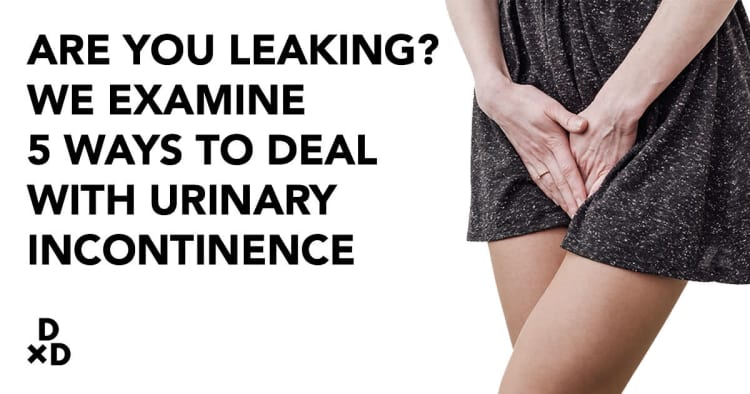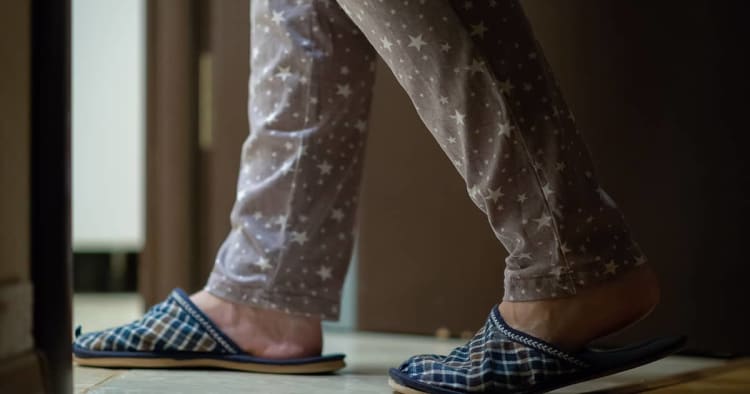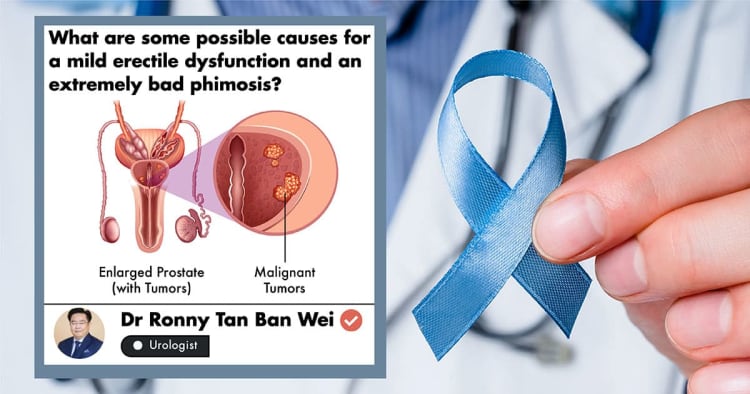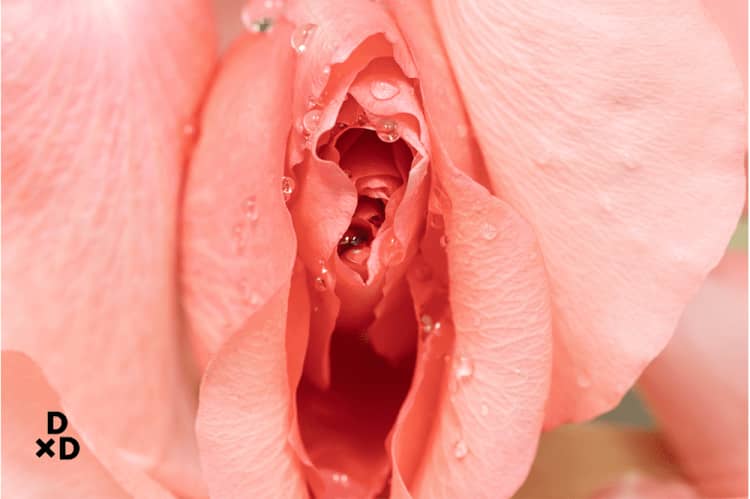Urinary incontinence is the uncontrolled leakage of urine. You’re not alone! It is a distressing condition that affects up to 14.5% of the Singapore population [1].
It is not a normal part of ageing and there are multiple methods and treatments available to reduce or eliminate this problem so that urinary incontinence doesn’t put a dent in your quality of life. In this article, we explore 5 ways to deal with urinary incontinence and avoid embarrassing situations.
What are the Types and Causes of Urinary Incontinence?
There are several types of urinary incontinence that can arise from different issues, ranging from problems of the bladder muscle functions to psychological causes.
The first two forms of urinary incontinence below are the most common in the populations across the globe.
Urge Incontinence
Urge Incontinence is one of the major urinary incontinence types. It is caused by uncontrolled contractions of the bladder [2], either from irritation within the bladder (e.g urinary tract infection) or lack of bladder contraction control due to neurological disorders (e.g. stroke, spinal cord injuries, Parkinson disease). This usually causes a frequent sense of urgency to urinate, even if there might not be much to pass. Patients often have to wake up multiple times at night to go to the toilet as well.
Stress Incontinence
Stress Incontinence is another major urinary incontinence type. In this case, there is leakage of urine as a result of increased pressure within the abdomen. It can be due to coughing, sneezing, exercising or even laughing [1].

Mixed Incontinence
As its name suggests, mixed incontinence is a combination of stress and urge incontinence symptoms.
Overflow Incontinence
Another term for this type of urinary incontinence is underactive bladder syndrome. It results in urine being retained in the bladder and unintentionally being released when the bladder is too full. Again, it may be due to neurological conditions, or some form of obstruction to the urine outlet (e.g enlarged prostate, tumours or cancers, pelvic organ prolapse).
Patients usually complain that they feel a sensation of incomplete urination or dribbling of urine whenever they visit the toilet, but yet there is still leakage of urine in between toilet visits.
Functional Incontinence
This form of urinary incontinence happens mostly to people who have some kind of disability, either physically or mentally, that prevents them from getting to a toilet in time [1]. There is usually no actual problem with the urinary tract.
Also Read: The Ultimate Guide to Urinary Incontinence and Sexual Dysfunction
What are the risk factors for Urinary Incontinence?
Non-modifiable factors
Pregnancy and childbirth can stretch and weaken pelvic floor muscles
Ageing and Menopause induce changes that may gradually weaken tissues of the genital-urinary tract
Previous pelvic or prostate surgery
Certain medications can cause or contribute to urinary incontinence, for example:
Water pills that increase the amount of water and salt that's lost from the body through urination [4]
Muscle relaxants
Narcotics
Allergy medicine
Psychiatric medications
Speak to your doctor as they may be able to help you cut out non-essential medications.
Modifiable factors
Obesity places additional stress and can therefore weaken pelvic muscles as well
Constipation - Frequent straining while having bowel movements can actually weaken pelvic floor muscles. Also, a build-up of faeces in the bowels can press against your urinary system, making the individual feel the urge to urinate more frequently or conversely, hindering the normal outflow of urine
Dietary factors - Caffeine, alcohol, and spicy food are bladder irritants that can aggravate incontinence
Smoking. Smokers tend to have a chronic cough which leads to an increase in abdominal pressure and therefore stress incontinence. In addition, the chemicals from cigarette smoking may irritate your bladder
What are 5 ways to Treat Urinary Incontinence?
Assuming that your doctor has excluded conditions such as infections, masses, prostate issues and neurological disease which may need other forms of treatment, here are a few things you can do that can help improve your condition significantly.
Related: The Ultimate Guide to Prostate Cancer in Singapore (2021)
1.Behavioural Therapy
By adopting some healthy practices or doing certain exercises regularly, a patient can see huge improvements to their urinary incontinence condition. Studies have shown that the frequency of urinary incontinence can drop by up to 86% [4].
Bladder Drills and Training
Bladder drills are a set of planned timings to visit the washroom with extended periods of time interspersed between each visit. As you follow the schedule to only urinate according to the schedule, your body can get used to holding more volume in your bladder before needing to release. That way, it builds a recognisable routine to urinate and can help contribute to a more normalised bladder function [4].
Bladder training is a similar process that includes progression levels to slowly build the resilience from minutes up to hours. Occasionally, some distractions and relaxation activities can be done to help with the tolerance building [5].

Kegel Exercises
Kegel exercises, otherwise known as pelvic floor muscle training, help to improve the strength of the pelvic floor muscles. This in turn helps to deal with urinary incontinence.
Kegel exercises are just like any workout at the gym. Through multiple sets, you are exerting your pelvic floor muscles and then relaxing them, excluding other muscles such as the core, legs, and buttocks [6]. The pelvic floor muscles will then be trained to hold in urine better.
2. Lifestyle Changes
There are a few healthy activities to adopt in your life that help curbs the occurrence of urinary incontinence events. Eating better or kicking unhealthy habits can do a lot to improve your condition.
Studies have shown that for users who have stopped smoking, men and women suffering from urinary incontinence have positive changes to their condition [5].
Limiting the consumption of caffeinated beverages like coffee and tea, and carbonated drinks can help as well [7].
Foregoing your alcohol binges can also do good for your condition [7].
You may also see an improvement if you avoid certain types of food which are known to be bladder irritants. This includes eating less citrus fruits like oranges and lemons, spicy foods and even chocolate [7]. Also, make sure you take in lots of high fibre foods to reduce constipation.
Last but not least, engaging in a more active lifestyle through exercises and weight loss routines can aid obese patients suffering from urinary incontinence [8].
Related: Incontinence In Women And Other Urinary Symptoms, Explained By A Specialist
3. Medication
Depending on the form of urinary incontinence you are experiencing, there is a range of different medications that can serve to aid your symptoms.
For instance, there are medications that can help urge incontinence by acting on the receptors of muscles responsible for urination, thereby decreasing overactivity of the bladder. They come in oral and application patches.
Vaginal oestrogen in the form of creams or pessaries may be helpful for urinary incontinence and vaginal dryness symptoms in women nearing or who have recently gone through menopause.
4. Devices and Alternatives
There are some devices you can use to help manage your condition but like using medications, different situations would call for different solutions.
Urinary Clamps
Urinary clamps are external compression contraptions for men suffering from urinary incontinence. It works by putting light pressure on the urethra from the underside of the penis to temporarily stop leakage and dribbling.
For females, short-term use of urethral inserts can be placed within the urethra before engaging in activities like exercise to block any leakage. A pessary is a different device that helps support the urethra from its placement site inside the vagina to reduce or stop stress incontinence throughout the day. A properly fitted pessary can be a highly effective solution.
Urinary Leak Care Pads
Apart from these devices, simple products such as absorbent pads worn externally may just be the solution, especially if symptoms are mild.
Products such as Laurier’s Light Urinary Leak Care Pads are thin wearables. They are similar to sanitary pads but are specially designed for light incontinence.
These pads are able to hold a higher liquid capacity and provide a higher absorbency, comfortability, and odour control needed for you to go about your day without bother.
Adult Diapers
Adult diapers can also be a brilliant alternative. Relief adult diapers from Japanese consumer product company Kao, has a range of quality adult diapers for both males and females.
The Active Senior range, Ultra Slim pants, is designed to be low-rise and thin to keep them compact against the body and not visible under clothes, just like underwear.
They are made with a thin, soft stretch material that is comfortable and breathable yet highly absorbent. Developed with Japan Advanced Anti-Odour Technology, Relief adult diapers keep you protected from embarrassing odours throughout the day.
With the right equipment, you will worry less about urinary incontinence.
5. Surgery
If your symptoms are severe or you would like a more long term solution, you can look to more invasive procedures to help with your urinary incontinence condition. A Urologist or Urogynaecologist can help assess your condition to provide the best treatment options or surgical procedure for you.
As a brief overview, in women, colposuspension and urethral slings can be performed for stress incontinence, through minor incisions on the abdomen and/or vagina.
There are also injections and nerve stimulation procedures, however, they tend to be an adjunct therapy to oral medications for other types of incontinence such as urge incontinence.
Related: The Ultimate Guide to Seeing a Urologist in Singapore (2020)
Surgical procedures for insertion of slings or artificial urinary sphincter are available to males.
Each procedure has its own risks, benefits, and chance of failure. Therefore you will need to have an in-depth discussion with an experienced specialist before coming to a decision.
Also Read: How can I treat my urine incontinence in Singapore, and how much will it cost?
**
Don’t Let Urinary Incontinence Become a Disruption**
These tips may serve to improve your symptoms. However, you can never be entirely sure if what you are doing is the best for your condition.
The most optimal course of action would be to find a trusted healthcare specialist to assess your condition and administer the treatment for you.
Urinary incontinence can disrupt your lifestyle in a very large way. So, spare no effort in getting the help that you need!
This article was produced with the support of Laurier and Relief. For a complete rundown of everything concerning urinary incontinence, head over to our Complete Guide to Urinary Incontinence in Singapore!
If you or your loved one is suffering from Urinary Incontinence, do not hesitate to reach out to Society for Continence Singapore. You will be able to find a wealth of knowledge and practical support on UI.











